The most common cause of nerve compression in the leg is pathology of the spine in the lumbar and sacral regions. Conduction disorders nerve impulse causes a feeling of sharpness or aching pain, which gives in the leg. Therapeutic measures are primarily aimed at releasing the pinched nerve and reducing the severity of the inflammatory process in it.
Development mechanism and reasons
The lower extremities are innervated by the sciatic nerve, which is formed by the fusion of spinal roots emerging from the spinal canal in the lower part of the lumbar and in sacral region. Pinching of this nerve at any level is causative factor development characteristic symptoms. The pinching itself develops as a result of pinching of the nerve roots in the natural bone openings (root exit spinal cord from the spinal canal) or muscle canals (upper sciatic nerve, surrounded by the piriformis muscle). As the compression intensifies, inflammation occurs, which further damages the nerve fibers.
A pinched nerve in the leg develops under the influence of several main causative factors: 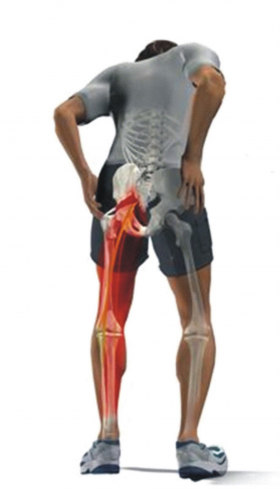
- Osteochondrosis is a pathology associated with degenerative processes in the vertebrae and their discs. At the same time, the height of the vertebrae decreases, which leads to a decrease in the diameter of the bone hole between them and compression of the roots.
- Disc protrusion between the vertebrae is a protrusion of the disc pulp (central part) without violating the integrity of the peripheral fibrous ring; if such a formation is formed in the area where the root emerges, its compression develops.
- Disc herniation - a more pronounced protrusion than with protrusion, rupture of the fibers of the peripheral fibrous ring occurs, the hernial sac can be of significant size, resulting in compression spinal root stronger.
- Spondylolisthesis is a condition in which one vertebra moves forward relative to the others with the development of a pinched nerve.
- Back injuries - bruises, subluxations, microfractures provoke a change in the ratio of the vertebrae and a decrease in the diameter of the holes between them.
- Syndrome piriformis muscle– compression of the sciatic nerve develops in the area of its passage through the muscular canal. It is provoked by hypertrophy (increase in volume) or spasm of the piriformis muscle.
Pinched nerves in the leg, regardless of the underlying cause, are facilitated by increased loads on the spine, its age-related changes in old age, local hypothermia.
Symptoms of a pinched nerve
The main manifestation of pathology, which indicates a pinched nerve, is pain. It has characteristic features:
- a sharp onset in the form of a lumbago in the lower back (sciatica) followed by the formation of aching pain;
- localization of pain in the sacrum, buttocks and leg, usually on one side;
- irradiation - the spread of pain develops from the lower back and radiates to the back of the thigh and lower leg up to the foot;
- connection of pain with movement - it intensifies when walking, standing for long periods of time, bending and turning. After rest, the severity of pain decreases somewhat.
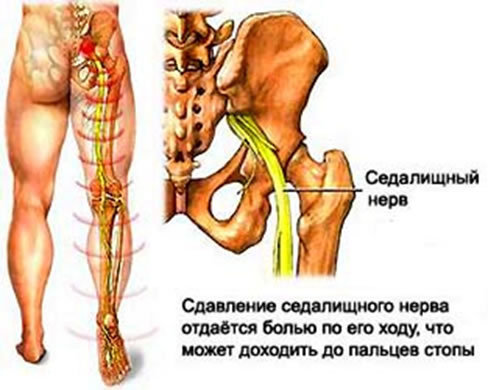
When the sensory fibers of a pinched nerve are pinched, paresthesia develops in parallel with pain - a decrease in tactile and temperature sensitivity of the skin. In the case of pronounced compression and involvement of the motor fibers of the nerve in the process, a weakening of muscle strength in the leg on the corresponding side occurs.
Treatment
To reduce the severity of nerve compression in the leg and its inflammation, measures such as:
- drug therapy - the main ones are anti-inflammatory medicines that reduce inflammation and pain (ketanov, rheumoxicam). It is also necessary to use drugs that reduce spasm of striated muscles (Mydocalm), chondroprotectors (Teraflex) and B vitamins to restore nerve fibers;
- physiotherapy - electrophoresis, paraffin baths or mud baths are used, which help reduce inflammation and muscle spasms;
- special gymnastics – aimed at stretching the spine and releasing the nerves;
- surgical plastic surgery - with the help of surgical intervention, the causes (protrusion, hernia) are eliminated and the hole in which the nerve is compressed is widened.
To prevent pinching, it is recommended to perform measured loads on the lower back and gluteal region in the form of gymnastics, a rational regime of rest and work with the avoidance of excessive stress. If you experience pain in your leg, you should consult a neurologist who will help you find out the cause of the pinching and prescribe appropriate treatment.
Pain and heaviness in the legs occur periodically in all people, but for some they become constant companions in life, causing a lot of anxiety and leading to disability.
A leg is a part of the human body consisting of a thigh formed femur, the lower leg, consisting of the tibia and fibula and the foot, which is a wisely composed set of small bones. The articulation of the leg with the pelvis is the hip joint - the largest joint in the human skeletal system, a joint that can withstand very heavy loads. The connection between the thigh and the lower leg - the knee or knee joint - is a complexly organized joint, including intra-articular cartilage, which provides the joint with high mobility. The knee joint is protected in front by the patella. The lower leg passes into the foot through the ankle joint, which is often subject to injuries, sprains and dislocations. The blood supply to the leg occurs primarily through the femoral artery, which is a branch of the iliac artery arising from the abdominal aorta. The veins of the leg have a special structure and are equipped with special valves that ensure blood flows upward. Defects of these valves lead to stagnation of venous blood in the leg and varicose veins.
The foot is formed by many bones connected to each other by movable joints. The special arrangement of bones, creating two arches, provides shock-absorbing capabilities of the foot. When the foot flattens and its arches disappear, the load on other joints of the body increases disproportionately and their diseases may develop.
The cause of pain in the legs when walking or at rest may be diseases spinal column, pathology of blood vessels (arteries or veins), diseases of the muscles of the limb.
The most common cause of leg pain, cramps and swelling is diseases of the arteries and veins of the lower extremities:
· embolism of the aortic bifurcation, that is, blockage of its lower section, which supplies blood directly to the legs;
thromboembolism of the arteries of the lower extremities;
acute thrombophlebitis, inflammation of thrombosed (clogged) veins - very common reason pain in the legs due to varicose veins;
Acute phlebothrombosis or blockage of an inflamed vein by a thrombus;
· varicose veins of the lower extremities;
· atherosclerosis of the arteries of the lower extremities (the cause of weakness, pain and numbness in the legs);
· obliterating endarteritis, inflammation of the arteries, accompanied by closure of their lumen (a common cause of leg pain in male smokers).
No less often, the reason why legs hurt when walking, and even at rest, are diseases of the spine, accompanied by compression of the spinal nerve roots that deliver nerve impulses to the legs and back to the spinal cord:
radiculitis;
· sciatica;
· lumbago.
Often the reason why the leg swells, and pain in the leg often appears both when walking and during rest, is joint diseases. Damage to the bone joint is accompanied by scattered pain throughout the leg, literally “twisting”.
Pain in the back and legs when walking can be associated with flat feet, inflammation of the muscles of the limb or the bones that form it. Erysipelas, phlegmon or gangrene of the limb are accompanied by red spots on the leg, the leg hurts and swells.
Well, and finally, the leg swells and begins to hurt, often as a result of injury, bruise, etc. fracture, compression, burn or frostbite.
Symptoms characteristic of your condition:
Probable diseases:
- Discuss in the community “Varicose veins, spider veins”
-
Joint diseases
Symptoms: pain in the joints of the legs when walking and at rest
At rheumatoid arthritis the patient complains that the joints hurt, the legs “twist”, especially often when the weather changes or the atmospheric pressure decreases. At serious illnesses joints, pain in the legs can be permanent, they are painful and often simply exhaust the patient’s psyche. Sudden sharp pain in a joint thumb legs is typical for gout. Knee pain occurs with gonarthrosis, injuries of the joint and intra-articular cartilage. Pain in the hip joint of the leg is accompanied by aseptic necrosis of the femoral head.
consultation with a therapist and assessment of the clinical manifestations of the disease. Based on the data obtained during the interview and examination of the patient, the therapist makes a decision on the course of further examination.
complete rest of the sore limb. Applying gels, creams containing painkillers or non-steroidal anti-inflammatory drugs to the joint area. Ingestion of painkillers from a home medicine cabinet. Joint diseases require mandatory referral to specialized medical care. Delay can lead to joint immobilization and disability.
Symptoms: shooting pain in the buttock and leg, spreading along the back of the thigh and lower leg to the very tips of the toes; pain when raising the leg, bending it at the knee
Sciatica is a disease that occurs as a result of compression and irritation of the roots lumbar region spinal cord. The cause of sciatica can be osteochondrosis, herniated disc, tumors, inflammation of the muscles adjacent to the spine, excessive stress on the spine, birth trauma, constipation, lesions hip joint, internal bleeding, infection or injury.
based on assessment clinical symptoms diseases. X-ray examination is indicated to exclude tumors of the spine or spinal cord, fractures, aneurysm or thrombosis of the aorta. If it is not possible to establish the cause of the pain, radionuclide scintigraphy, computed tomography, magnetic resonance imaging. When signs of spinal cord compression appear, myelography is used.
complete rest, bed rest for 2-3 days (on a hard, flat surface), wearing, if necessary, a special corset, applying cold to the lumbar area, and then dry warm compresses, taking painkillers, applying creams to the skin of the lumbar region, containing non-steroidal anti-inflammatory drugs, warming components and muscle relaxants. For severe shooting pain in the lower back and leg, you can call an ambulance to administer more effective painkillers.
Symptoms: tension and soreness of the leg muscles when palpating; leg pain when walking
Myositis can develop with local or general hypothermia of the body, as well as as a result of muscle overstrain. Infectious myositis is less common, as complications of ARVI, influenza, streptococcal sore throat, pharyngitis or tuberculosis. In these cases, myositis develops at the peak of the causative infection.
Pain in the leg muscle with myositis intensifies with movement and subsides quite quickly with rest. A spasm of the inflamed muscles is observed; when they are palpated, sharp pain. Limb movements are limited.
Purulent myositis, in addition to sharp, shooting, throbbing pain in the leg and constant voltage inflamed muscles, manifested by swelling and redness of the soft tissues of the leg, increased body temperature, chills, weakness, and headache.
Based on data from examination and palpation of the muscles of the limb. The presence of a provoking factor or infectious diseases may indicate myositis.
begins with resting the limb and applying an ice pack. To reduce pain, you can take painkillers and apply painkillers and anti-inflammatory creams and gels to the skin of the leg.
Femoral nerve neuritis
Symptoms: burning, shooting pain in the leg, especially when walking, spreading along the anterior inner surface of the thigh; pain along the femoral nerve; inability to straighten the leg at the knee joint
The disease is usually secondary and develops when lumbar osteochondrosis, spondylitis, spinal tumors. The patient notes a decrease in the strength of the anterior thigh muscles, a sharp decrease in skin sensitivity in this area, a tingling sensation, crawling on the skin.
based on clinical manifestations and requires consultation neurologist. In search of the cause of the disease, it is possible to conduct additional instrumental studies, for example, angiography, myelography or radiographic examination.
creating rest for the affected limb, warm dry compresses on the affected area, warm wraps, cutaneous application of warming and distracting agents, as well as gels or creams containing non-steroidal anti-inflammatory drugs.
Obliterating endarteritis
Symptoms: pain in the calves of the legs when walking, you have to stop and rest in order to walk some distance without pain
Pain caused by injury
Symptoms: pain in the leg that occurs after a limb injury when walking, decreasing with rest
Severe burning pain in the leg, the presence of a painful muscle spasm that limits movement in the lower limb, is most often associated with a “soft tissue” injury to the leg, that is, a bruise, sprain, microtear of muscles or tendons. The pain sharply intensifies with movement, adduction-abduction or flexion-extension of the leg, at the same time, restriction of movements helps the pain subside. Microtears and hemorrhages in the muscles can be accompanied by the appearance of bruises on the skin, the limb increases in volume, swells and hurts; the leg becomes deformed only when a muscle or tendon rupture occurs, and the pain becomes very severe.
Analysis of complaints, examination and palpation of the affected area; in case of injury, you should contact a trauma center. To exclude a fracture of the bones of the lower limb, an x-ray examination is indicated, and in difficult cases - computed tomography and magnetic resonance imaging. includes complete rest, wearing plaster cast, use of a cane or crutches. If the leg muscles hurt after a bruise, treatment begins with applying an ice pack to the injury site and applying gels or creams with anti-inflammatory and painkillers (non-steroidal anti-inflammatory drugs) to the skin in the problem area. traumatologist
Varicose veins veins lower limbs
Symptoms: leg pain; periodic night cramps; dilatation of the veins of the lower leg; weakness; heaviness in the legs; frequent severe pain in the calves of the legs in a dream
The disease is more common in women and manifests itself in at a young age, often during pregnancy or after childbirth. Varicose veins develop slowly, over years or decades. The leading symptom of the disease is the presence of dilated nodular veins on the posterior inner surface of the legs. In addition, usually in the evening, heaviness, bursting pain in the legs and swelling appear, which disappear overnight. The appearance of swelling in the legs indicates the development of venous insufficiency, that is, poor circulation and stagnation of blood in the legs. The skin on the legs becomes pigmented, spotted, and thinned. It is easily injured, wounds heal with difficulty, sometimes turning into deep trophic ulcers.
the disease does not require emergency medical care, but is an indication for a routine visit to a surgeon or phlebologist. To reduce pain in the legs due to varicose veins, it is recommended to constantly wear compression hosiery, alternating load and rest for the legs, elevated position of the limbs during rest, light stroking massage of the legs, applying phlebotonic gels or creams to the skin of the extremities, which improve blood flow through the veins, can reduce pain and swelling of the legs.
Some people, under the influence of various provoking factors, experience sharp pains in the leg, which are caused by a pinched nerve. The pain is often acute, severely limiting the range of motion and affecting the overall well-being of a person.
If the nerve supplying the leg is pinched, the patient most often complains of an acute pain attack that affects the thigh and spreads to the lower leg and foot. Spicy pain syndrome– this is the main sign of the disease, allowing you to think about the appropriate diagnosis.
It is worth keeping in mind that pain often does not develop spontaneously, but under the influence of external factors. Factors that provoke an attack include:
- prolonged exposure to the cold;
- active physical activity for which the body is not adapted;
- prolonged stay in an awkward position that causes discomfort;
- lifting heavy objects.
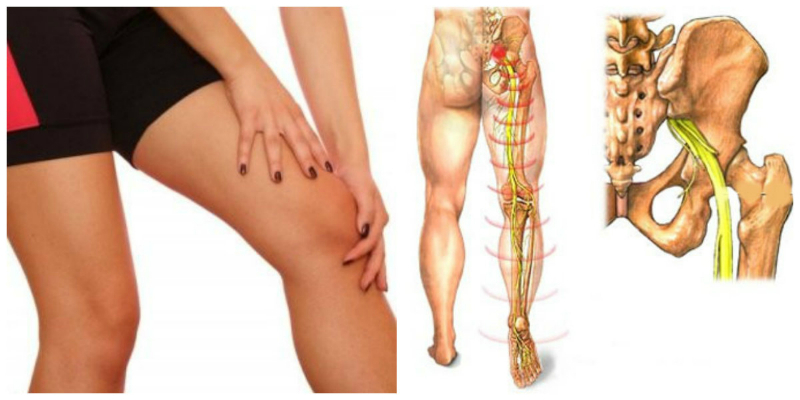
Along with a pinched nerve in the leg, due to these factors, sciatica, as it is also called, can develop. However, the symptoms may be similar, but differential diagnosis presents difficulties even for experienced doctors.
Pain occurring in the leg is usually accompanied by the following patient complaints:
- normal gait is sometimes disrupted to the point that the person completely loses the ability to walk during an attack;
- the sensitivity of the affected limb to external influences changes, burning and tingling may be felt;
- there will be a restriction in the normal range of movements, the ability to freely move the fingers, bend and straighten the knee, and make movements in the ankle area will disappear;
- a person will notice that his feet begin to sweat excessively.
Assessing all the symptoms will help your doctor suspect the presence of a pinched nerve in your leg, but remember that this diagnosis is not made based solely on symptoms.
Causes of pinching
Highlight wide range reasons that can lead to the development of pinching.
| Leads to compression of the spinal roots, which can result in pinching of one of the nerves responsible for the innervation of the leg | |
| Due to the protrusion of part of the intervertebral disc, the nerve root that supplies the legs may also be compressed. | |
| In this case, one of the vertebrae changes its position, moving slightly forward, which also leads to a pinched nerve | |
| Protrusion of the contents of the disc can also lead to partial or complete compression of one of the nerves if the herniation is located close to the hole through which the nerve exits | |
| Tumor formations | If located close to the exit site of the nerve, it can cause pinching |
| Piriformis syndrome | Usually accompanied by pinching of the sciatic nerve, resulting from hypertrophy or inflammation in the piriformis muscle |
| Pregnancy | A pathology in which the growing uterus can put pressure on the spinal column, causing compression of the roots |
| Lesions of the rectum, such as paraproctitis or abscesses | Also puts pressure on the spinal column |

In addition to the main factors that trigger the pathological process, there are additional ones, which include:
- polyradiculoneuritis;
- herpes, spondyloiditis or in the area of the sciatic nerve or nerve roots that provide leg movement;
- polyneuropathic changes in various diseases of the endocrine system;
- the effect of infectious pathologies;
- poisoning with toxins and heavy metals;
- pathologies of a demyelinating nature;
- heavy weight;
- inflammation of the pelvic organs.
Diagnosis of the disease
A pinched nerve in the leg is a pathology accompanied by a fairly clear clinical picture. Even if the patient cannot clearly name the factors that provoked the onset of the disease, specific clinical picture, where the leading symptom is pain, will indicate to the doctor where to look for pathology.
Diagnostic measures in the case of a pinched nerve in the leg are prescribed not to clarify the diagnosis, but to determine the cause that provoked the pathology. Establishing the cause of the disease allows you to combat it most effectively.
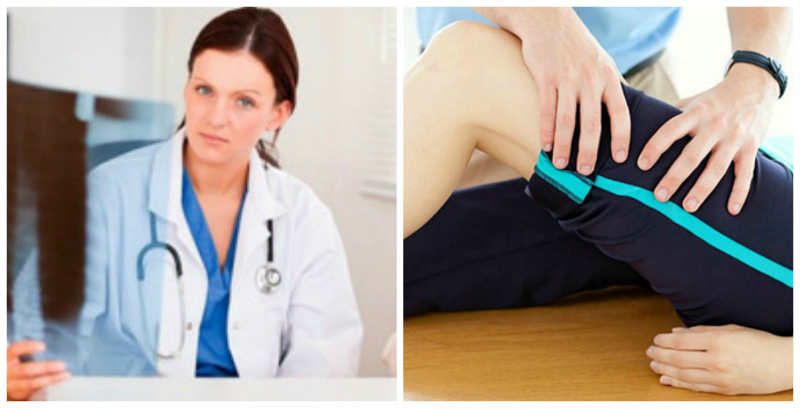
The following techniques can be used:
- radiography, which allows you to determine the presence of pathological changes in the spinal column, as well as in bone structures;
- CT and MRI, which allow you to clarify the diagnosis if radiography does not provide enough data or does not allow you to fully assess the cause of the pathology;
- Ultrasound of organs located in the pelvis will help exclude the inflammatory nature of the disease;
- Scintigraphy is performed if there is suspicion of tumor development.
In the diagnosis of the disease, the collected anamnesis and neurological status of the patient play an important role. When examining the neurological status, it is necessary to pay attention to decreased sensitivity in the affected limb, revitalization or decreased tendon reflexes.
An acute attack of the disease begins to be treated with the establishment of a special daily regimen. The patient's mobility is limited, and he is recommended to lie on some hard surface. It is important to remember that a pinched nerve cannot be heated. This is explained by the fact that heat increases the swelling that forms during pinching. Also, during the period of exacerbation, gymnastics and active movements are prohibited. They are introduced into the regime when the pain attack has been stopped.
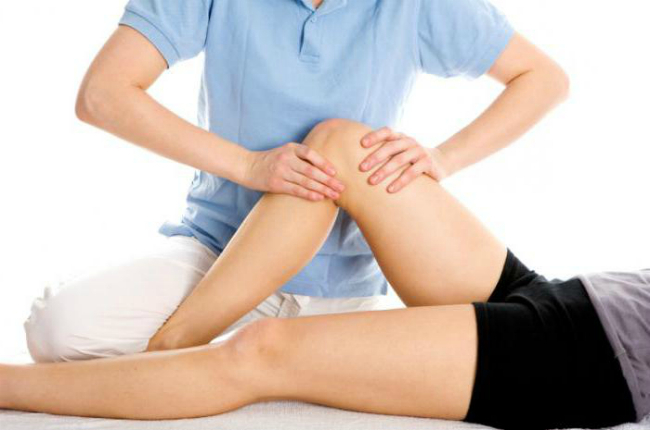
Medicines that can be used:
- products for external use, such as gels and ointments, which help relieve inflammation and relieve pain (Ketonal, Fastum gel, Nurofen, Nise, etc.), non-steroidal anti-inflammatory drugs are mainly used;
- if the pain syndrome is severe, doctors recommend locally irritating ointments, for example, Analgos or Nicoflex;
- if the pain is not relieved with the help of local remedies, it is possible to use their analogues in tablets for oral administration, as well as in the form of intramuscular injections (drugs such as Ibuprofen, Nimesulide, etc. are used);
- after pain relief, vitamins from group B are used, which allow the damaged nerve to recover;
- muscle spasms can be stopped with the help of antispasmodics, for example, Mydocalm.
An important element of therapy is dietary food sick. It is recommended to exclude all harmful products. Food must be received warm; it is better to give preference to liquid food. Liquid food will help fight constipation, which can exacerbate pinching.
Physiotherapeutic effects
Physical therapy used to treat a pinched nerve in the leg focuses on strengthening the muscles and stretching them slightly, preventing spasms. Such an effect helps reduce muscle pressure on an already injured nerve, removing one of the elements that provokes the development of pain.
Physiotherapeutic techniques are mainly based on warming up, which precludes their use in the acute period of the disease. Physiotherapy is possible only when the acute period of the disease has already passed and remission has begun. IN otherwise exposure will only aggravate the disease rather than alleviate the symptoms.
The following techniques can be used:
- electrophoresis with the introduction of drugs;
- phonophoresis with drug administration;
- magnetic therapy;
- paraffin applications.
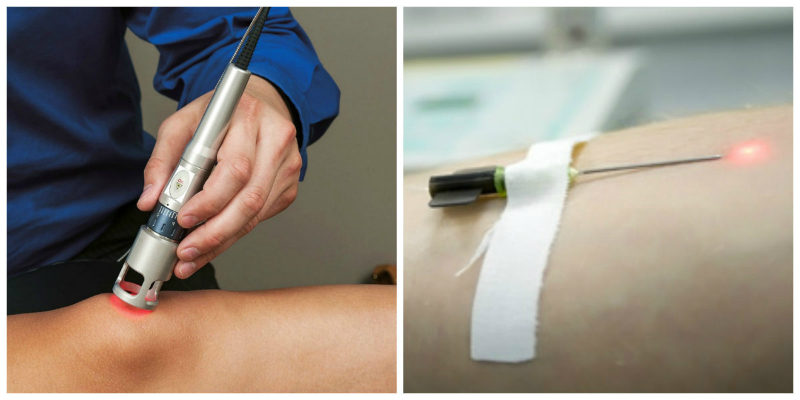
Physiotherapeutic effects allow the patient to improve blood circulation in the problem area and eliminate muscle spasm. Physiotherapy can also help relieve swelling if it is not caused by inflammatory process that occurs during the acute period of pinching.
Counts possible use for pinched nerves in the leg reflexology. This procedure will also help cope with pain and relieve swelling, but it should only be carried out under the close supervision of a professional.
Traditional methods of treatment
Many people try to cope with a pinched nerve in the leg using techniques traditional medicine. It is important to remember that the recipes offered by this industry alternative medicine, can only help to cope with the symptoms of the disease. At the same time, it will not be possible to eliminate the cause of the disease, which means further progression of the disease without treatment from a specialist.
Traditional medicine can be used as an adjuvant against the background of the main therapy. For example, it can significantly alleviate the condition of a patient if he suffers from severe pain.

The following recipes are often used:
- rubs and lotions based on decoctions and tinctures made using herbs that have anti-inflammatory properties;
- baths, which add a variety of essential oils or herbs that also have an anti-inflammatory effect;
- Tinctures of elecampane or horse chestnut can be used internally in small quantities;
- it is possible to use ointments and poultices based on bee products (for example, applying a cake of honey and flour or an ointment based on propolis and calendula to the affected area).
One of the advantages of traditional medicine is that it combines well with the main therapy and can be used in parallel. This is especially true if we are talking about taking painkillers, against the background of which treatment is carried out with rubbing and compresses or ointments.
The main disadvantage of treatment folk remedies is that due to the use of highly allergenic components (especially beekeeping products), they often develop allergic reactions. That is why, when using traditional medicine, a preliminary consultation with a doctor is necessary.
Exercises for pinching
Therapeutic gymnastics in cases of pinching can take place both in the gym and at home. The main thing is that the patient does not try to exercise physical activity, even therapeutic ones, during the acute period of the disease, since at this time even light exercises will aggravate the symptoms.
Gymnastics must be performed without haste, working not on the number of exercises performed, but on the result. If any of the exercises provokes pain, it is recommended to abandon it.
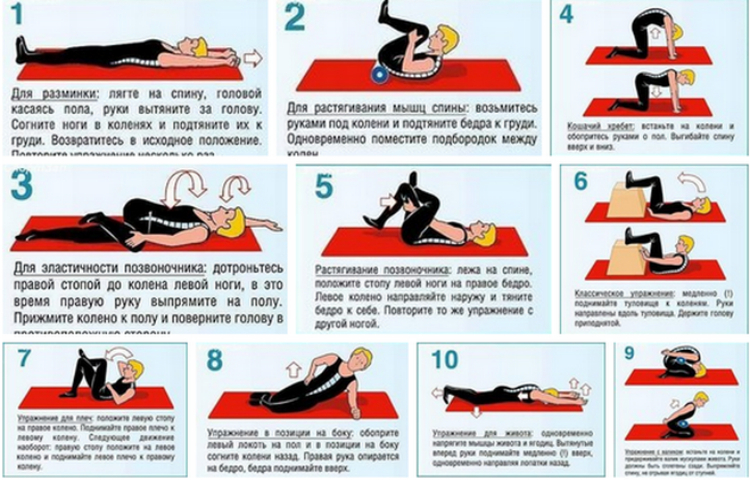
If a nerve is pinched in the leg, the following complex is suitable:
- walk for several minutes with high knees at each step;
- the torso is tilted, for convenience, the legs are set shoulder-width apart;
- you can, holding the back of a chair, alternately lift each leg up as much as your body allows;
- flexion and extension of the knee joint are done from a standing or lying position;
- holding on to the back of a chair, they do circular movements one leg, and then repeat the movements with the other leg (movements must be performed both clockwise and counterclockwise!);
- in a position on all fours, swing each leg alternately upward;
- lying on your side, do pull-ups of your legs to your chest, as if curling up into a ball.
The process of treating a pinched nerve in the leg is not quick, and ideal results cannot be achieved immediately. If a person wants to get rid of a problem, he must carefully follow the doctor’s recommendations, and also remember to take care of his own health, since no one can force a patient, for example, to perform gymnastic exercises if he does not want to.
A pinched nerve in the leg is an unpleasant pathology that leads to severe discomfort. In some cases, the pathology leads to loss of the ability to walk, so treatment of the disease should not be neglected.
Useful articles:
-
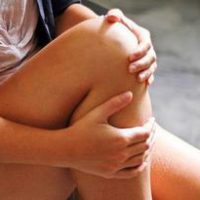 What to do if you have an old meniscus injury in your knee? Hello! I am 35 years old. It's been a month since my knee has been bothering me (pain when walking, when bending). Passed the R.graphy:...
What to do if you have an old meniscus injury in your knee? Hello! I am 35 years old. It's been a month since my knee has been bothering me (pain when walking, when bending). Passed the R.graphy:... -
 Why treat neuropathy trigeminal nerve doesn't help? Nadezhda is turning to you for help. Verified diagnosis: Severe, chronic drug-resistant neuropathic pain syndrome due to...
Why treat neuropathy trigeminal nerve doesn't help? Nadezhda is turning to you for help. Verified diagnosis: Severe, chronic drug-resistant neuropathic pain syndrome due to... -
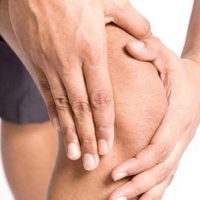 How to treat a torn ligament knee joint?
Knee ligaments are torn. How and where can it be treated? Originally Answered: How does a torn knee ligament heal?
How to treat a torn ligament knee joint?
Knee ligaments are torn. How and where can it be treated? Originally Answered: How does a torn knee ligament heal?
